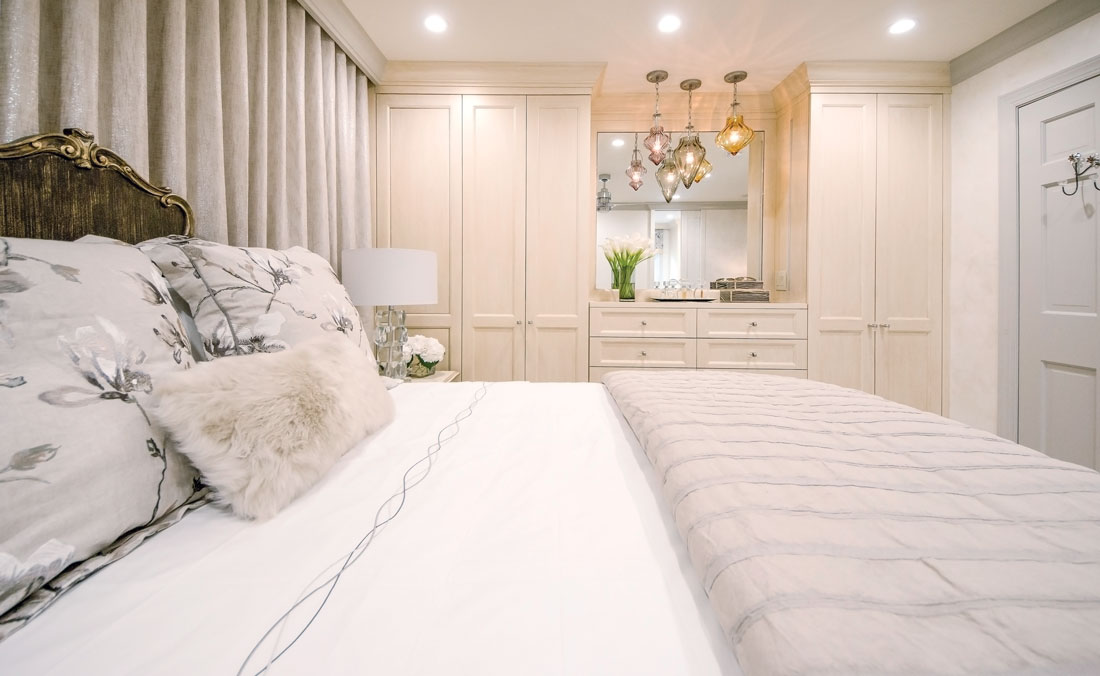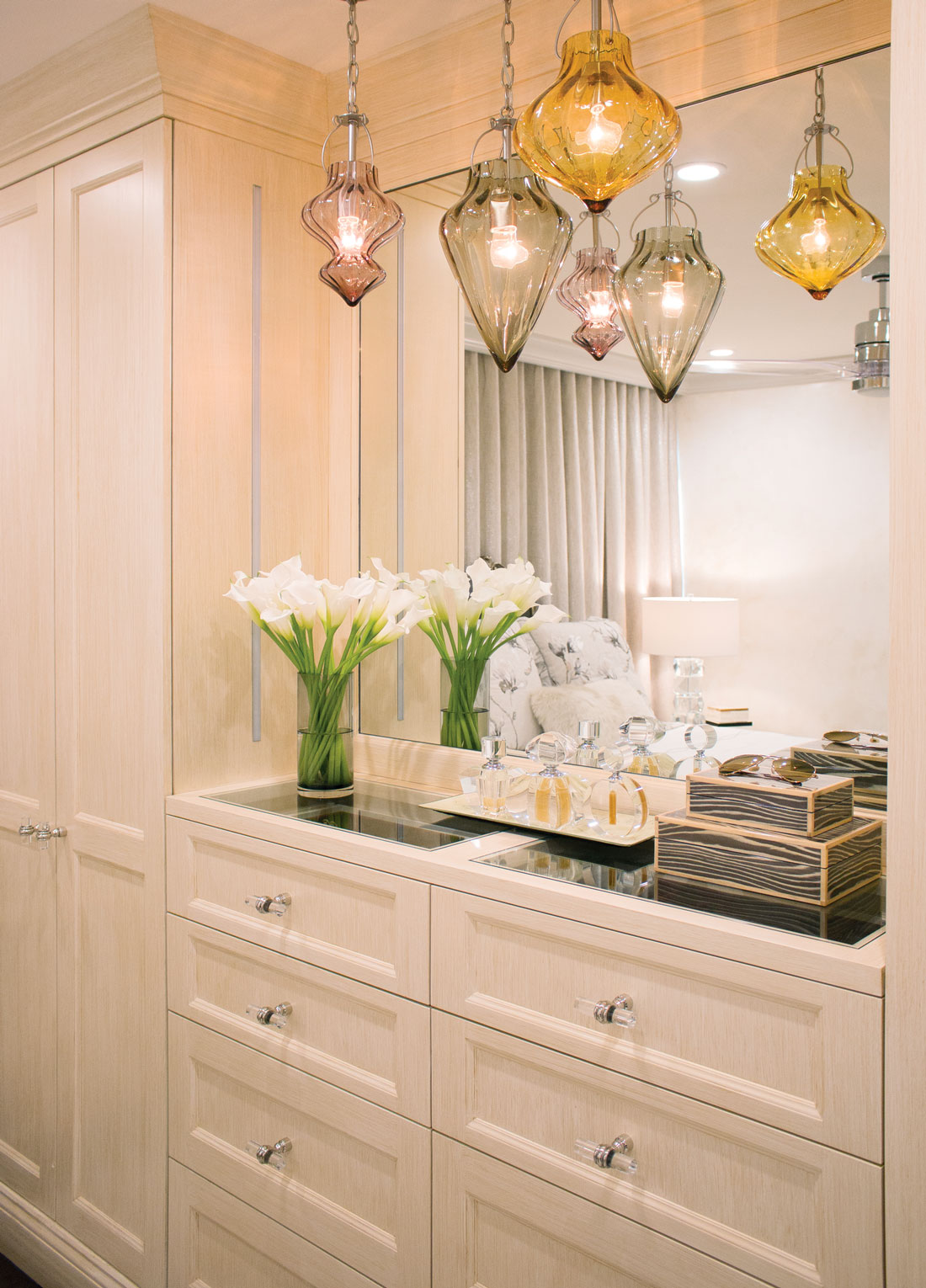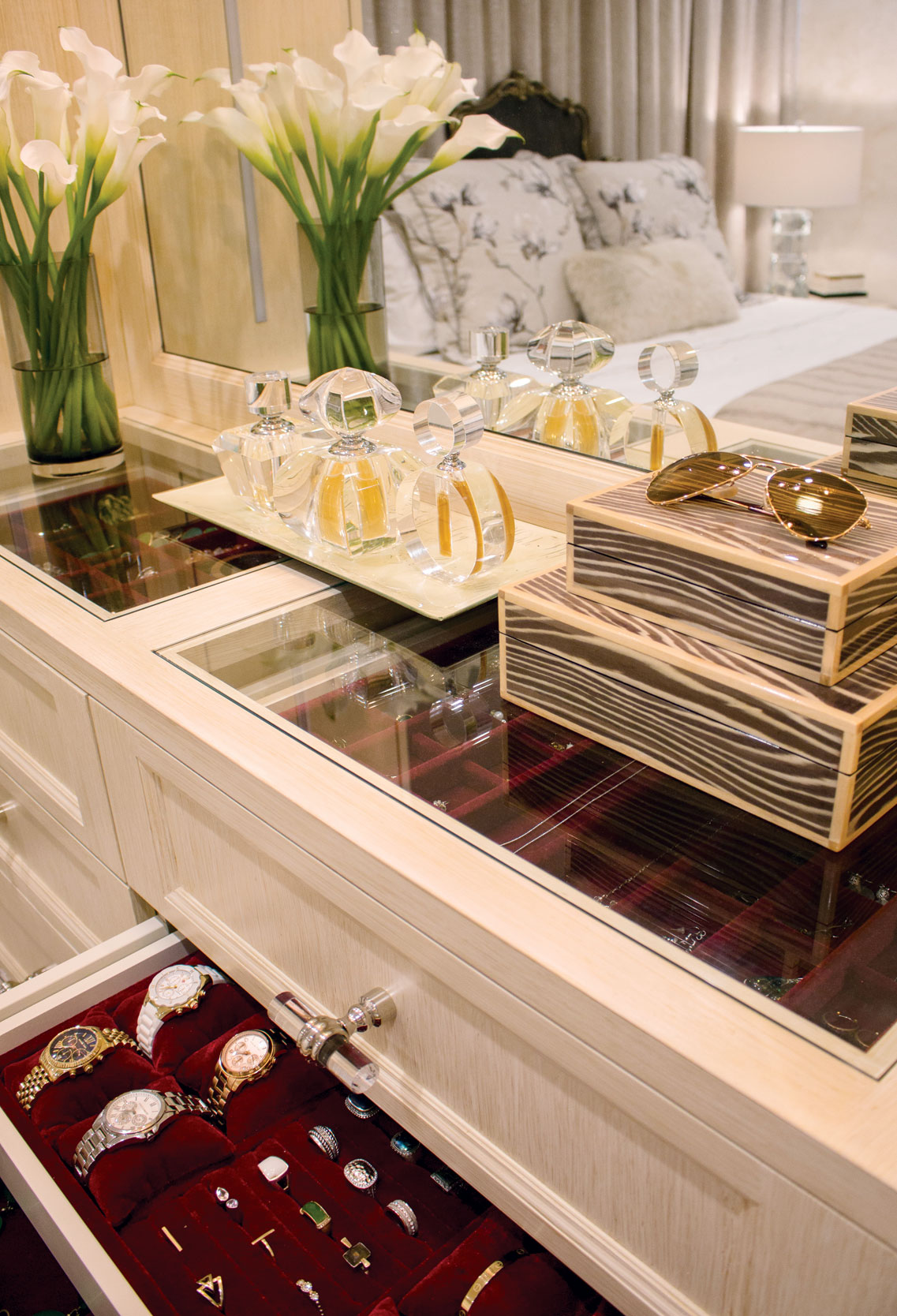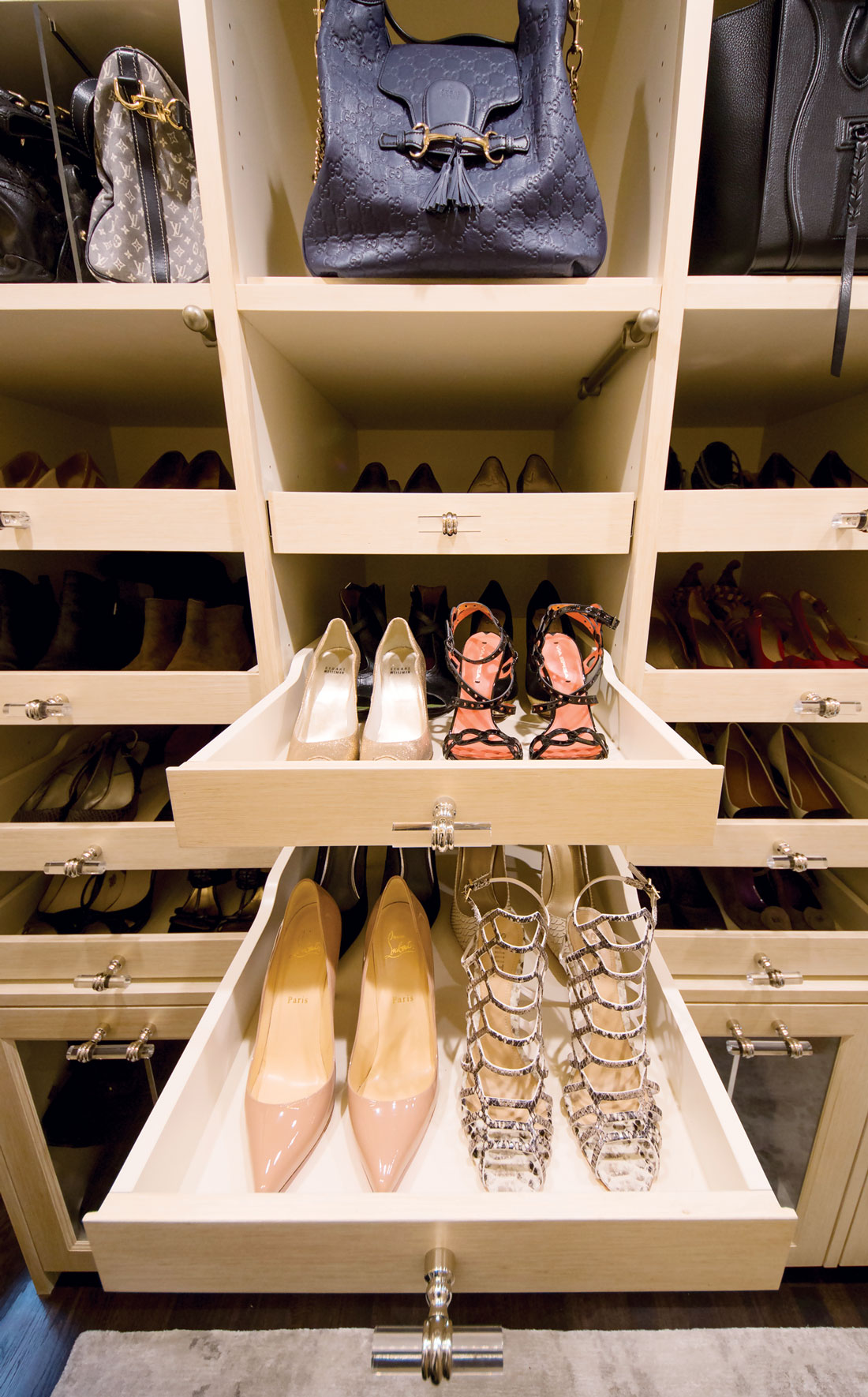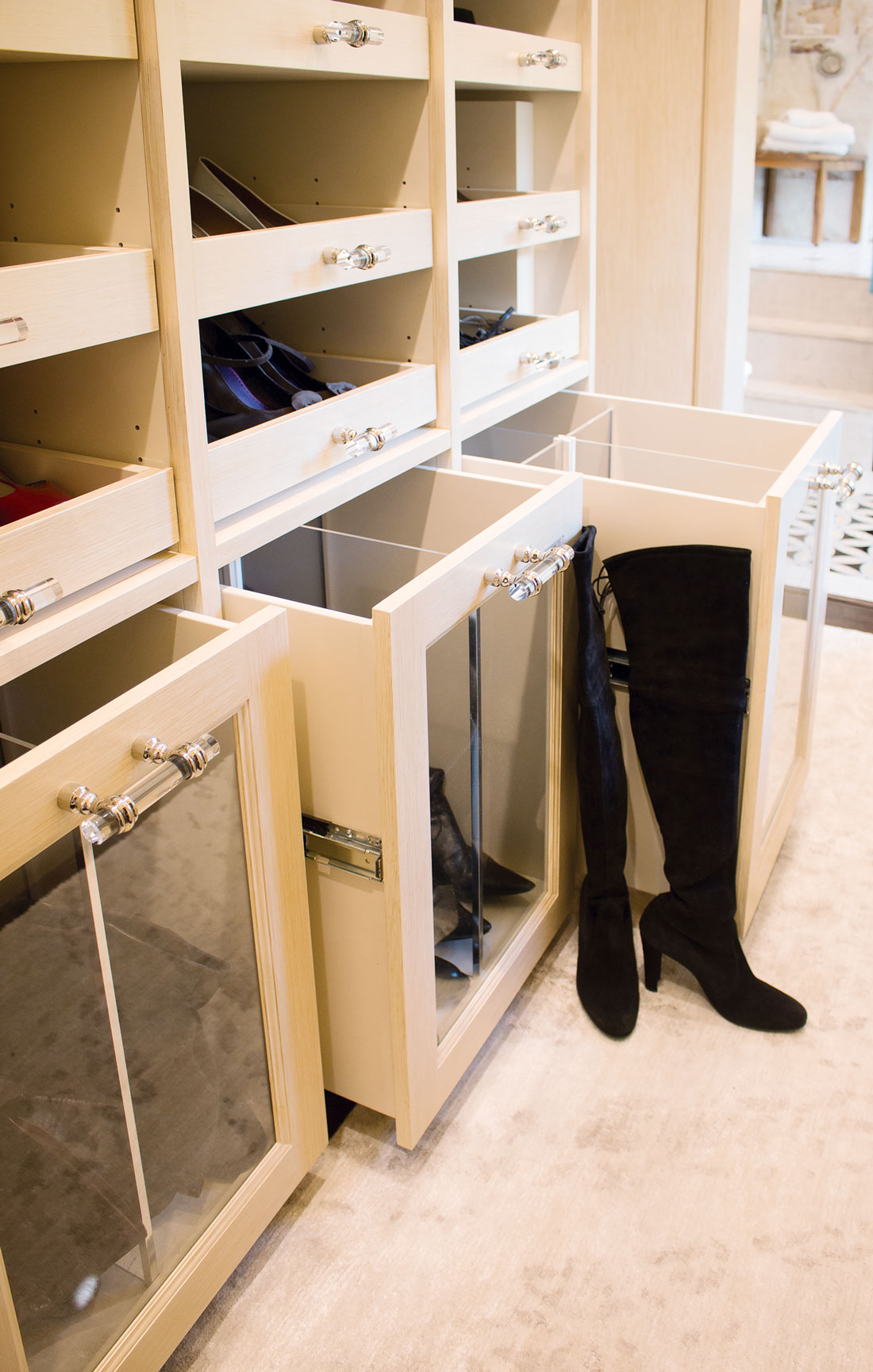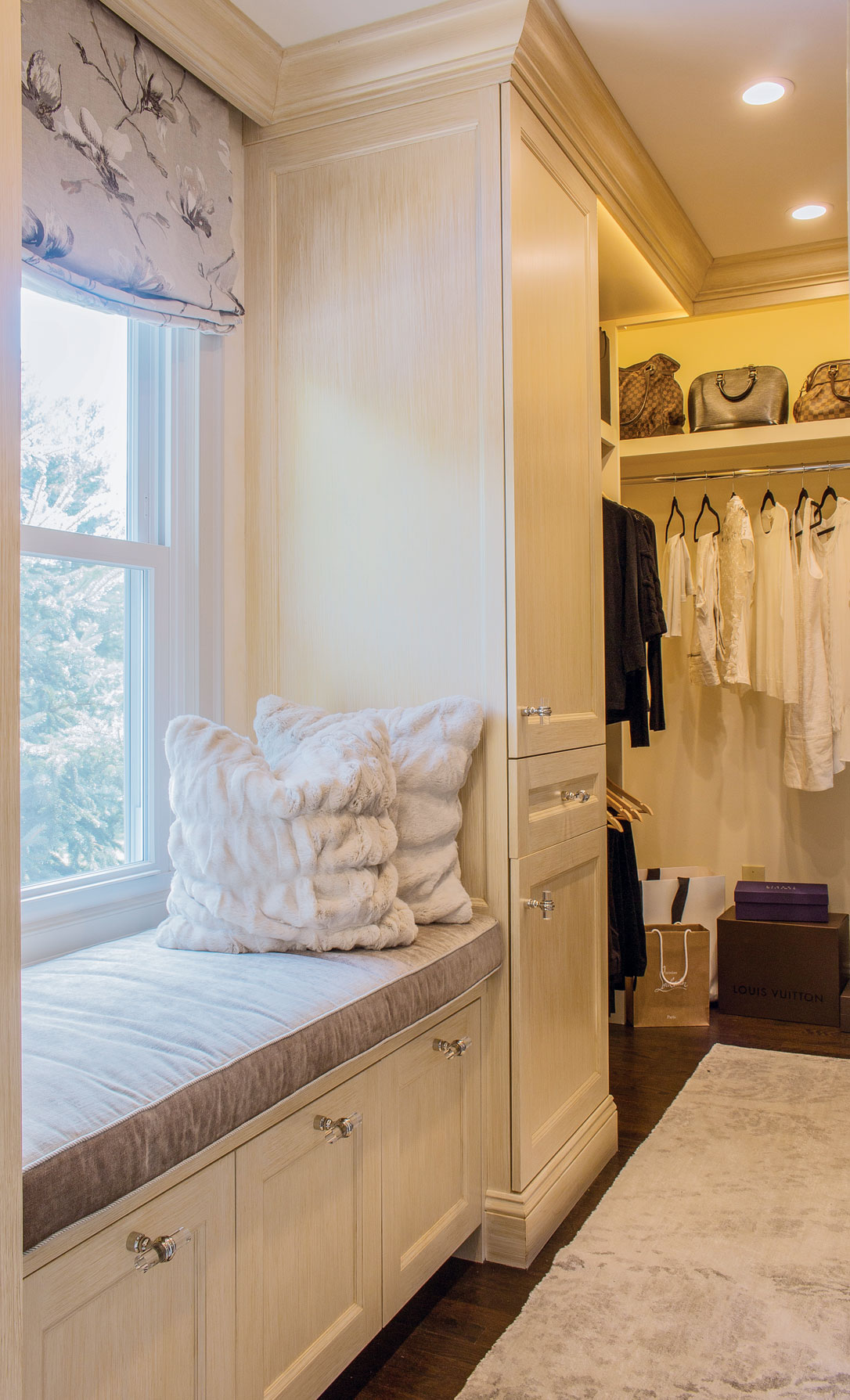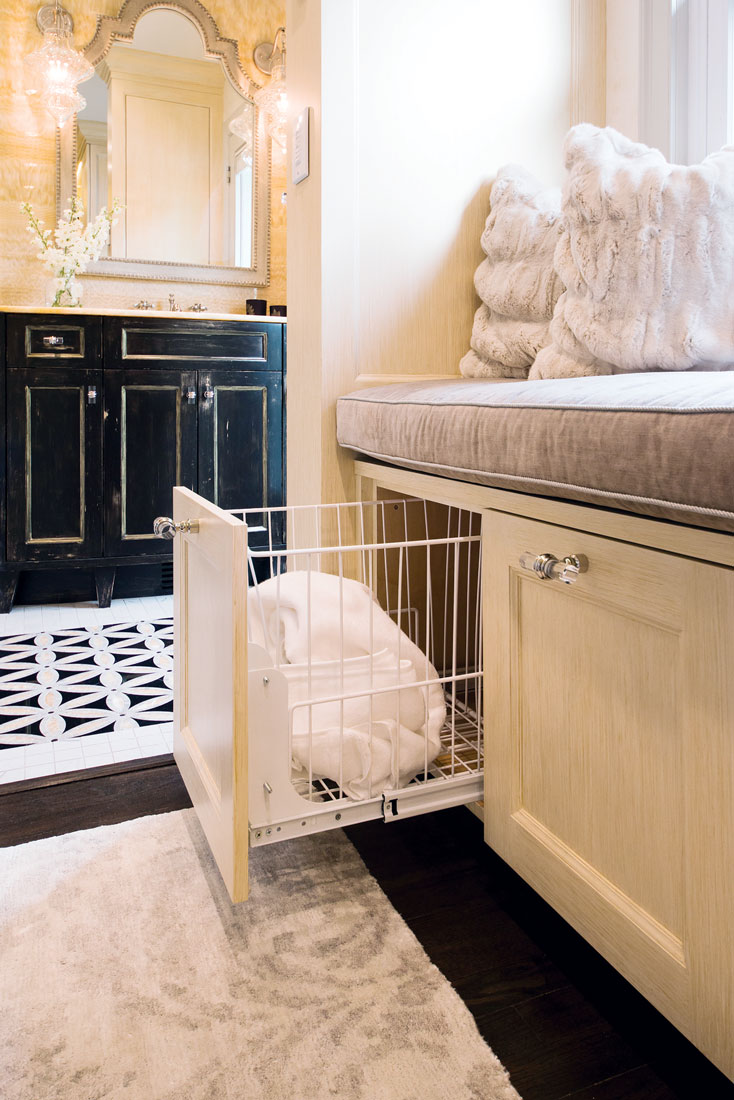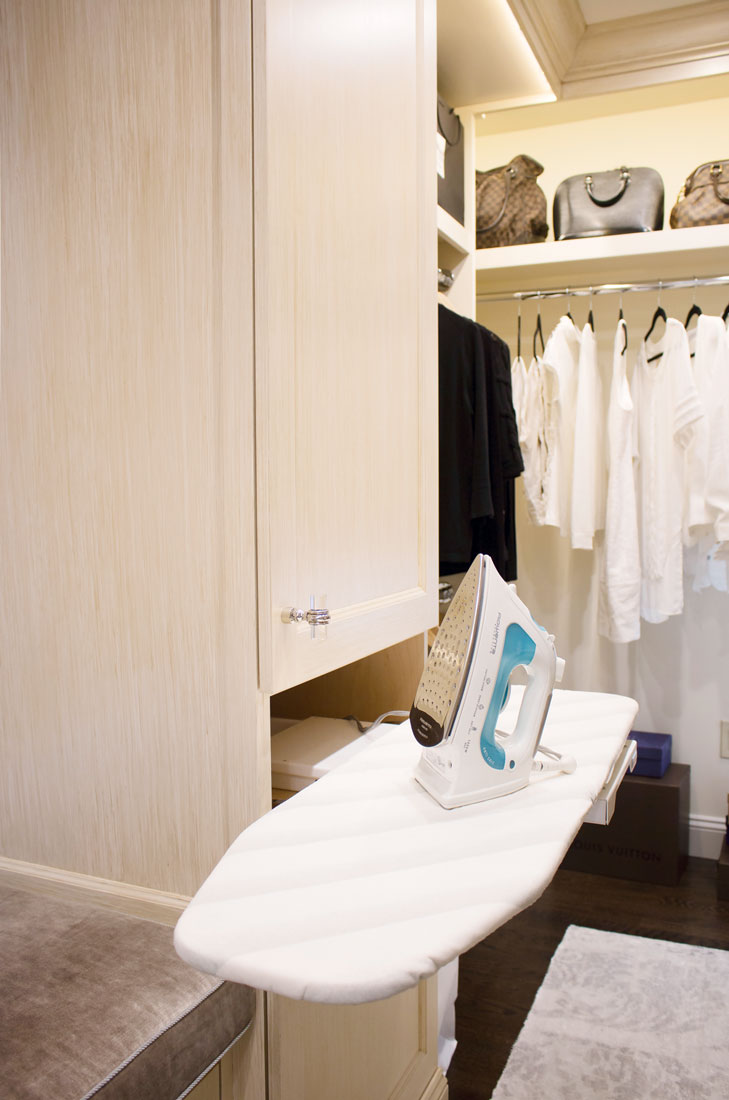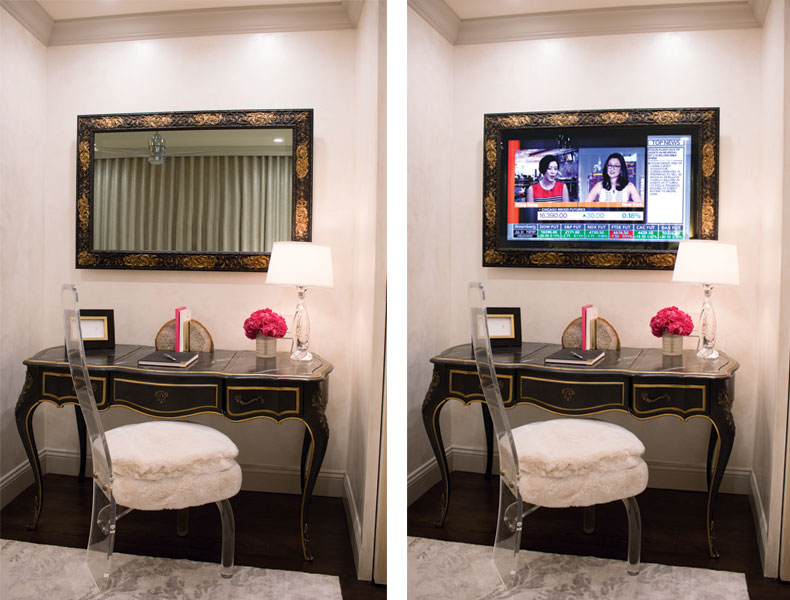Orderly Conduct
Writer Marirose Krall | Photographer David Macaluso | Location Hunterdon County, NJSmart Ways to Store Your Stuff.
It seems we could all do with a lot less baggage. That’s according to Claudia Giselle Tejeda, CID, NCIDQ, of Brooklyn, New York-based Claudia Giselle Design LLC. Tejeda should know. Her profession requires that she spend countless hours inside people’s homes (and closets). “Most of us are guilty of owning more than we need and, often, more than we even want.”
Tejeda believes that “organization is a big part of the design process. Before I begin working with clients, I ask them to purge. I also recommend that they work with a professional organizer, as the process of purging is both time-consuming and stressful.”
One such professional is Katie Tracy, owner of Parlin, New Jersey-based Simple Spaces and current president of the Northern New Jersey Chapter of the National Association of Professional Organizers. Tracy explains the causes behind our inability to let go of possessions. “Very often, people aren’t taught what being organized means. They’re not encouraged to get rid of things.” The enormity of the task can also be disheartening. “When you look at an organizing project, it can seem so overwhelming,” Tracy says. “That can be a real stumbling block. But it doesn’t matter where you start, it’s that you start. Oftentimes, just taking that first step makes a huge difference.”
To encourage them to take that first step, Tracy helps her clients go through possessions one by one. “As we touch each item, I ask, ‘Do you use it? Do you need it? Do you love it?’” The items that elicit a positive response “are the kinds of things we should have in our homes. All the other stuff tends to become clutter.”
Even much-loved and often-used items can become “clutter” when there’s no place to put them, Tracy notes. “Everything needs a home.” Tejeda agrees: “Having designated locations for belongings reduces general disorganization, which is stressful and a waste of time. In our residential interiors, we strive to create space for everything.”
The designer recently worked with homeowner Teresia Bost to create a stress-free, uncluttered master suite in her Hunterdon County, NJ home. Tejeda describes Bost’s lifestyle. “She’s an accomplished lawyer and leader in her community, but most importantly she’s a mother to a young daughter, two dogs and a cat. She envisioned a space she could escape to on her own. She desired a wardrobe storage system that would streamline her day-to-day routine.”
Before that goal could be met, Bost enlisted the help of Stacy Matticoli, owner of Put It There, a professional organizing firm in Skillman, NJ. “I had quite a few things I needed to make decisions on,” Bost says. “Stacey really helped me make the decision to keep or let go. It was not a quick process.”
Once that arduous task was completed, Tejeda got to work. “She asked me a series of questions to get an understanding of my routine and the process of how I get myself from out of bed to out the door,” Bost explains. “When she recognized that there were inefficient actions in my process, she and I devised a set-up that would allow me to remove some of the extra steps I had been taking between my bedroom, bathroom and dressing room.”
Once she understood the process, Tejeda measured and inventoried belongings. “We designed custom-built cabinetry to maximize space and accommodate every part of the edited wardrobe.”
The attention to detail was important to the project’s ultimate success. “The finished product is a space of function and efficiency with no shortage of elegance and luxury,” Tejeda says. “It delivers both the priceless savings in time and energy that a stress-reducing lifestyle provides and the serenity a private oasis creates.”
Bost adds, “It’s really, I think, a woman’s dream closet. I love the fact that it was designed uniquely for me. It was built around my process for getting myself together in the morning and unwinding at night. All those elements were created for who I am and what I do. Her design not only improved my time getting dressed but also increased my enjoyment of the whole process.”
Tejeda adds, “we have busy lives, and staying organized should be routine. By automating daily routines and simplifying how we interact with our belongings, we improve overall quality of life. If we can create spaces that effectively support our clients’ lifestyles, we have met one of our fundamental goals as interior designers. More than anything, our interiors are designed to elevate our clients’ lives, both physically and emotionally.”

